Midwestern states, led by Nebraska, North Dakota, and Minnesota, may be the best places to sit out a recession thanks to large reserves, good DTI ratios, and relatively low unemployment.
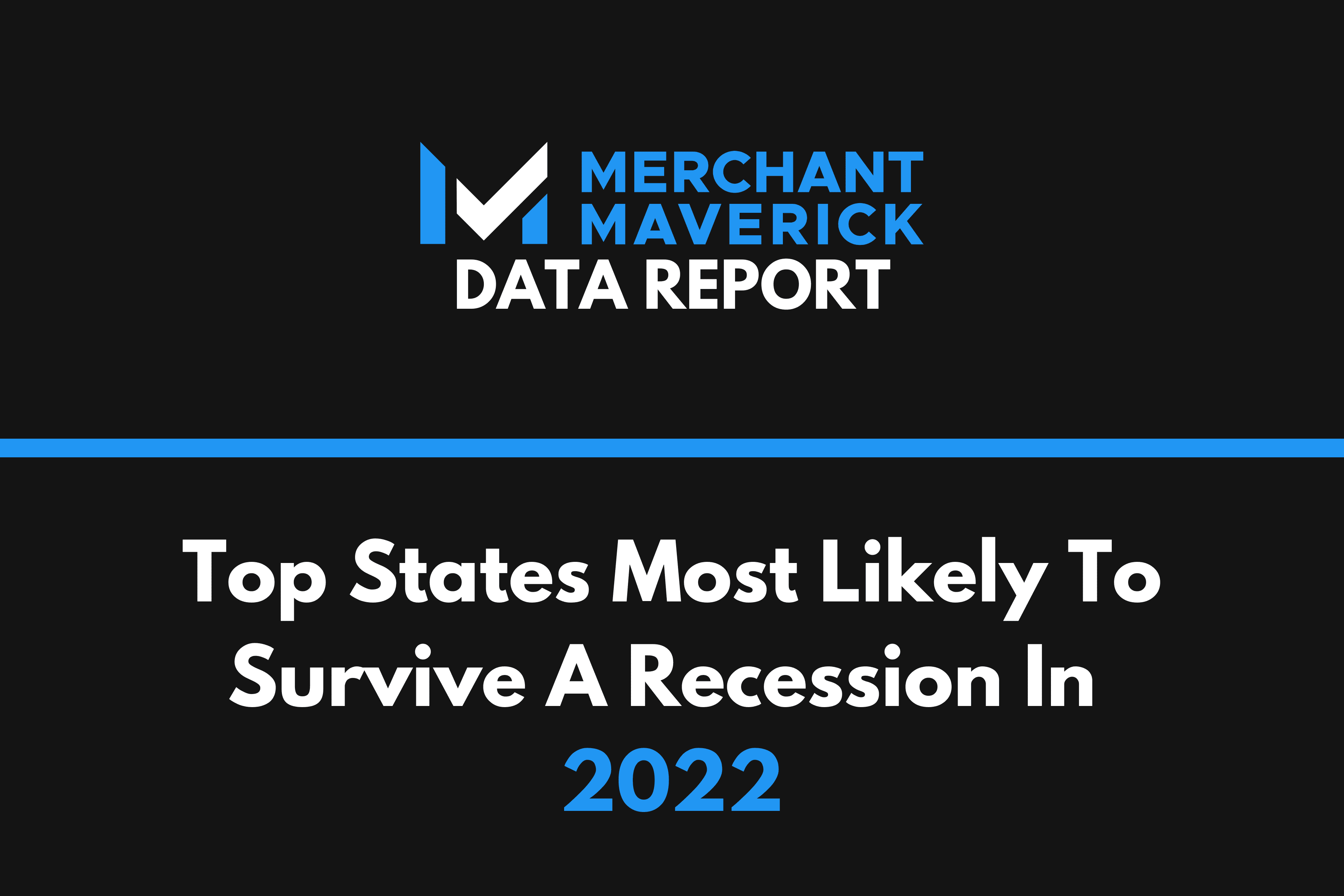
You want to survive the next recession? It may be time to pack your bags for the Upper Midwest. While there’s no guarantee that we’ll see a recession this year, runaway inflation, interest rate hikes, skyrocketing oil prices, and geopolitical turmoil are starting to make one look inevitable.
In Merchant Maverick’s inaugural data report on The Top States Most Likely To Survive A Recession, our analysis found that the states in the best condition to mitigate the effects of a recession aren’t where you might expect. Most of them, as it turns out, are in the Heartland.
We dug into state economic data, selecting key indicators (see methodology below) associated with economic resilience including unemployment rate, unemployment insurance coverage, debt-to-income ratios, and even how the states held up during the Great Recession.
Heading up our list by a respectable margin is Nebraska, followed by North Dakota and Minnesota, respectively.
Though strengths vary from state to state in the region, these states tend to have ample government reserves, favorable debt-to-income rations, and relatively low unemployment rates. They also tended to have experienced positive GPD growth during the Great Recession, a time when many states saw stagnant or negative GPD growth.
There were recession-resistant outliers in other regions.
Delaware and New Jersey come in as the strongest contenders in the Northeast thanks in large part to their affordable housing stock and high GDPs per capita. Despite the well-publicized economic issues in coal country, West Virginia emerges as the most recession-resistant state in the Southeast with a favorable debt-to-income ratio and considerable government reserves. Georgia, the runner-up at No. 14, didn’t quite make the cut. Texas and Oklahoma make strong showings in what otherwise appears to be a very vulnerable Sunbelt.
Key Findings
- No Upper Midwestern State Ranked Below 18. The Upper Midwest as a region is well-poised to survive a recession, even with the lower-performing states beating the mean. Michigan, at No. 17, is the most vulnerable state in the region. Adjacent Midwestern states Nebraska (No. 1), Illinois (No. 10), and Indiana (No. 11) also performed well.
- The West is completely absent from the Top 10. For reasons ranging from low GDP per capita, to high debt, to high unemployment, the West would be vulnerable if the recession were to hit in 2022.
- High Per Capita GDP, Big Coastal Markets Are Struggling With High Unemployment, Household Debt. High per capita GDPs in California (No. 23), New York (No.27), and Washington (No. 32) were not enough to propel any of those states into the top ranks. California, for example, has the most debt-burned households in the nation, and the second-worst unemployment rate.
- The Sunbelt accounts for 6 of the 10 most vulnerable states. Including popular relocation destinations like Arizona, Nevada, and Florida.
The Top 10 States Most Likely To Survive The Next Recession

1. Nebraska

Overall score: 78.8
Though Nebraska may not be the first state that comes to mind when discussing economic powerhouses, the Cornhusker State looks to be on solid footing when it comes to surviving the next recession. With ample government reserves (23.1%), a great debt-to-income ratio (0.62), and the lowest unemployment rate in the nation (2.3%), Nebraska sets the pace for the rest of what looks to be a recession-resistant Upper Midwest region.
One more reason to run for cornfields instead of the hills if the economy flatlines: Nebraska weathered the Great Recession better than most other states.
2. North Dakota

Overall score: 72.2
With an overall score of 72.2, the Roughrider state clocks in at #2 on our list, thanks in part to its large government reserves in relation to spending (48.5% or 2nd-highest nationally) and a surprisingly high GDP per capita ($83,338 or 5th-highest nationally). North Dakota also benefits from a low unemployment rate (3.1%), low-income tax rate (2.9%), and affordable housing market (6th most affordable nationwide).
North Dakota's economy, primarily dominated by agriculture, experienced a huge rebound following the Great Recession, with the state's GDP skyrocketing 19.7% from 2007 to 2010 — a bigger jump than any other state.
3. Minnesota

Overall score: 71.8
The “Land of 10,000 Lakes” is not only rich in bodies of water, but also when it comes to GDP per capita ($73,097, or 12th nationwide), thanks to its diversified economy. In fact, many of the top 1,000 publicly traded companies, including Target, 3M, and General Mills, are headquartered in Minnesota. With more than half of its population residing in the Twin Cities metro area, Minnesota also benefits from very low unemployment (3%), high unemployment insurance coverage (56.9%, or 2nd nationwide), and affordable homes—34.5% of residents can afford a home at the median price, which places MN as the 7th most affordable state to buy a house in.
Minnesota actually ranks better than average in every metric we measured, except for the state income tax rate, which is quite high at 9.9%.
4. Delaware
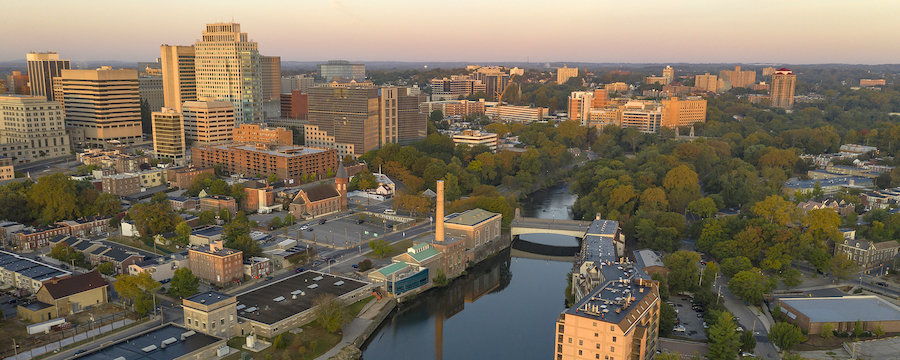
Overall score: 64.2
Despite being the second-smallest US state in terms of area, this Mid-Atlantic state is well-situated to ride out the next recession. Bolstered by high government reserves (25.9% or 5th-highest nationally) and a state GDP per capita of $81,271 (7th-highest in the nation), Delaware comes in with an overall score of 64.2.
Delaware also has the most affordable housing market of any state in the US—64.2% of households can afford the median home price.
5. West Virginia

Overall score: 63.8
West Virginia isn’t necessarily a state that screams “wealth,” and indeed, WV ranks poorly —47th place— in terms of GDP per capita. However, this Appalachian state actually has a lot going for it when it comes to its economic resilience: large government reserves (3rd highest nationally), low household debt (3rd lowest nationally), and affordable housing (9th most affordable).
West Virginia also bounced back readily from the Great Recession, with GDP rising a healthy 4% from 2007 to 2010. The Mountain state’s economic output has grown considerably since then, too; historically reliant on coal exports, West Virginia has diversified its workforce in recent years to include more healthcare, hospitality, and food services jobs.
6. Oklahoma
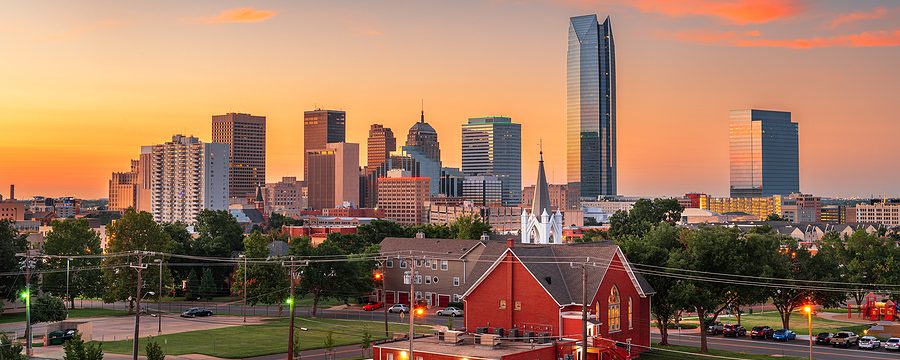
Overall score: 63.7
The Sooner State hosts a vibrant, varied economy, propelled by petroleum, agriculture, aviation, telecom, and biotech. Home to several Fortune 500 companies, Oklahoma has the reputation of being a very business-friendly state, with a low tax burden (income tax is 5%), low unemployment (2.8%), and high unemployment insurance coverage (54% of the unemployed have received unemployment insurance).
Despite an unimpressive GDP per capita ($52,366 or 44th in the nation), Oklahoma benefits from sizable government reserves (22.3% or 9th-highest nationally) and a relatively low debt-to-income ratio (0.72 or 16th nationally).
7. New Jersey
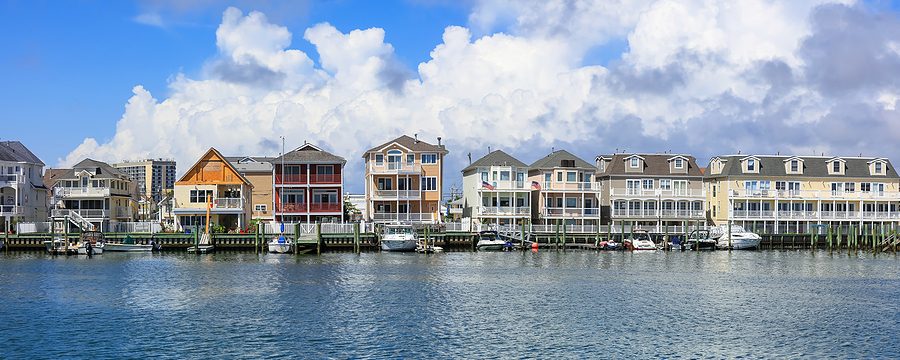
Overall score: 62.7
Close enough to New York City to benefit from its wealth, but far enough to still have affordable housing, residents of the Garden State still have a solid foundation on which to ride out the next recession. New Jersey’s most impressive metrics are its housing affordability (4th most affordable market in the US) and unemployment coverage (5th in the nation).
Jersey also ranks better than most states in the areas of GDP per capita (13th), debt-to-income ratio (19th), and state government reserves (22nd). Fun fact: New Jersey has the highest number of millionaires per capita in the United States (according to research published in Kiplinger).
8. Texas

Overall score: 61.1
From its landmass (268,596 square miles)to its population (29.1 million residents in 2020), everything is bigger in Texas—except for the taxes. The state’s most notable recession-resistant feature is that the state has no income tax—that’s right, Texas’ income tax rate is 0%.
Despite not collecting income tax, the petroleum-rich Lone Star state’s government reserves are above average (15.5%), as is its GDP per capita ($67,958). Texas also benefits from respectably low household debt levels (18th-lowest nationally).
9. Wisconsin
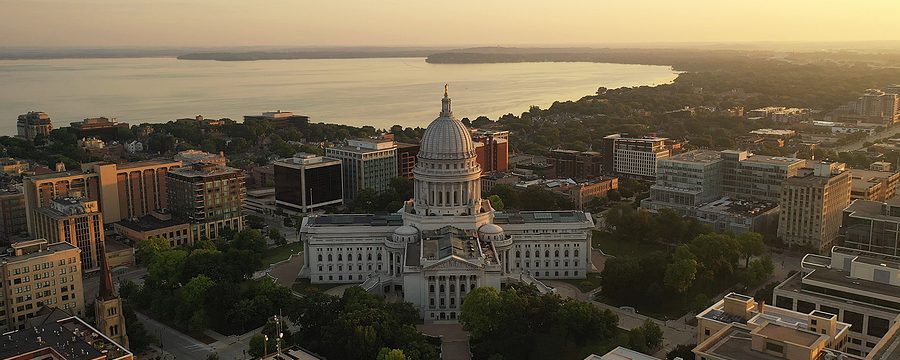
Overall score: 60.4
Wisconsin is not only “America’s Dairyland,” but it’s also a land of low household debt (0.66 debt-to-income ratio), low unemployment (3.1%), and high unemployment insurance coverage (38.9%). Its multifaceted economy is reliant on healthcare, tourism, manufacturing, and agriculture—particularly dairy, as you might have guessed.
Though only about a quarter of Wisconsinites can afford to own a home in the state, Wisconsin’s median home price is still well under the national average.
10. Illinois

Overall score: 59.1
Illinois just barely makes our top ten, thanks to its high GDP per capita ($74,693 – 10th-highest nationally), low debt-to-income ratio (0.67), and high unemployment coverage (46.9% coverage or 7th-highest nationwide). Home to Chicago, the 5th-largest city in the nation, Illinois also ranks surprisingly well in terms of its housing affordability —30.6% of residents can afford the median house price — and has a relatively low state income tax rate of 5%.
Another interesting fact about the “Land of Lincoln” that may help make the state more affordable for low-income residents during times of recession: Illinois has one of the highest minimum wage rates in the country ($12 for non-tipped employees) and it will rise even further to $15 in 2025.
The Bottom 10 States For Surviving The Next Recession

- Nevada (37.2 overall score): Nevada got creamed during the Great Recession, losing 10% of its GDP from 2007 to 2010. Things won’t necessarily be as bad next time, but the Sagebrush State’s 1:1 income to debt ratio won’t leave it much margin for error.
- Arizona (37): Arizona suffers from a low GDP per capita, high debt-to-income ratio, and low unemployment insurance coverage. Housing is not particularly affordable (AZ is the 31st most affordable state to buy a house) and the state’s GDP sunk by 7.2% during the last major recession.
- Kentucky (35): Kentucky is one of the poorest US states, with a GDP per capita of $52,402. Low government reserves, high unemployment, and low unemployment insurance coverage are also issues.
- Hawaii (34.7): With an economy that’s mostly dominated by low-paying tourism jobs, Hawaii is one of the least affordable states to buy a house (ranking 49th in this area) and has a state income tax of 11%, the highest after California.
- New Mexico (34.2): New Mexico has the highest unemployment rate in the country, at 5.9%. The state ranks 45th when it comes to GDP per capita, and only 20.7% of households can afford a home at the median price.
- Idaho (33.9): Idaho has a low GDP per capita of just $49,897, a high debt-to-income ratio, and very low unemployment insurance coverage (16.2%), indicating an ineffective state unemployment system. State income tax is also on the high side, at 6.8%.
- Maine (29.7): Mainers have to contend with multiple economic challenges, including a high-income tax rate of 7.2%, low salaries, and a lack of affordable homes. Maine did not show resilience following the last major recession; in 2010, its economy was still down 2.3% from pre-recession levels.
- Arkansas (29.6): AK has one of the lowest government reserves of any state in the country (3.7%, or 48th overall) and ranks a dismal 49th in terms of GDP per capita. Only 20.9% of households can afford a home at the median price and the state economy sunk 4% during the last recession.
- Florida (28.9): Florida’s economy tanked 8.1% during the Great Recession. Unfortunately, Floridians won’t have much to fall back on should they find themselves unemployed by the next recession, thanks to an unemployment system that only provides insurance to a fraction (11.5%) of the unemployed, coupled with soaring household debt levels (0.91 debt-to-income ratio).
- Mississippi (28.4): Mississippi has the lowest GDP per capita in the United States, at just $42,802. The state also suffers from low government reserves, high unemployment, and low unemployment insurance coverage.
Raw Data

Methodology
To determine the best and worst states to survive the next recession, we gathered data from eight separate metrics across all 50 US states. For each metric, states were given a score out of 100 based on each state’s rank, with the best-ranked state scoring 100 and the worst-ranked state scoring 0. These individual metric scores were then multiplied by specific weights to achieve an overall score for each state.
Below are the eight metrics we chose, along with the percentage used to calculate the weight of each metric:
- Size of state government reserves (17.5%): This metric shows the percentage of a state government’s monetary reserves compared to the government’s spending, per data compiled by The Pew Charitable Trusts. It gauges how long a state government can operate with zero funding.
- State GDP per capita (17.5%): This metric is simply the gross domestic product of each state calculated on a per capita basis using data from the Bureau of Economic Analysis and the Census Bureau. It shows the strength of each state's economic output.
- Debt-to-income ratio (17.5%): Using data from the Federal Reserve Bank of New York and Statista, we calculated the number of debt households in each state compared to their annual income. This helps determine how cash-strapped households in each state may become during a recession.
- Unemployment insurance coverage (17.5%): This metric estimates the effectiveness of each state’s unemployment system by calculating the percentage of the unemployed who have received unemployment insurance. Data from the US Department of Labor was used.
- Unemployment rate (10%): For a general look at the economic health of each state, we used the latest unemployment rate numbers put out by the Bureau of Labor Statistics.
- Housing affordability (10%): This metric highlights the percentage of households that can afford the median home price in each state, per data from the National Association of Home Builders. This snapshots how affordable it is to live in each state.
- State income tax rates (6%): Because income taxes could put an additional burden on a household’s budget during a recession, we also included the latest state income tax rates. A lower rate is considered better for this report.
- Total state GDP change from 2007 to 2010 (4%): For a glimpse at how each state has performed historically during a recession, we compared the total GDP of each state right before the Great Recession (Q4 of 2007) to when the national GDP returned to pre-recession levels after the brunt of the Great Recession’s impact (Q4 of 2010). This metric was calculated using Bureau of Economic Analysis data.
Our data was pulled from eight separate sources in total, including The Pew Charitable Trusts, the US Bureau of Economic Analysis, the US Census Bureau, the Federal Reserve Bank of New York, Statista, the US Department of Labor, the US Bureau of Labor Statistics, the National Association of Home Builders, and Tax-Rates.org. Most metrics were calculated using data last updated in 2021 or 2022.






















